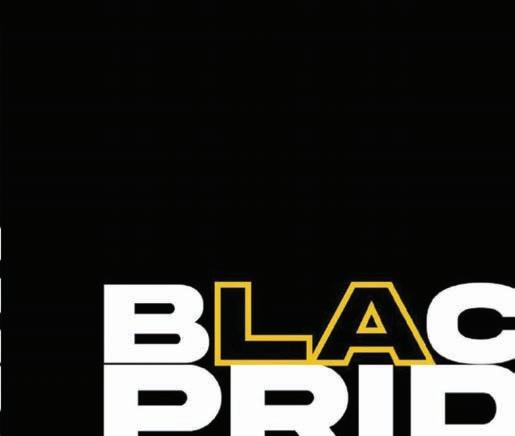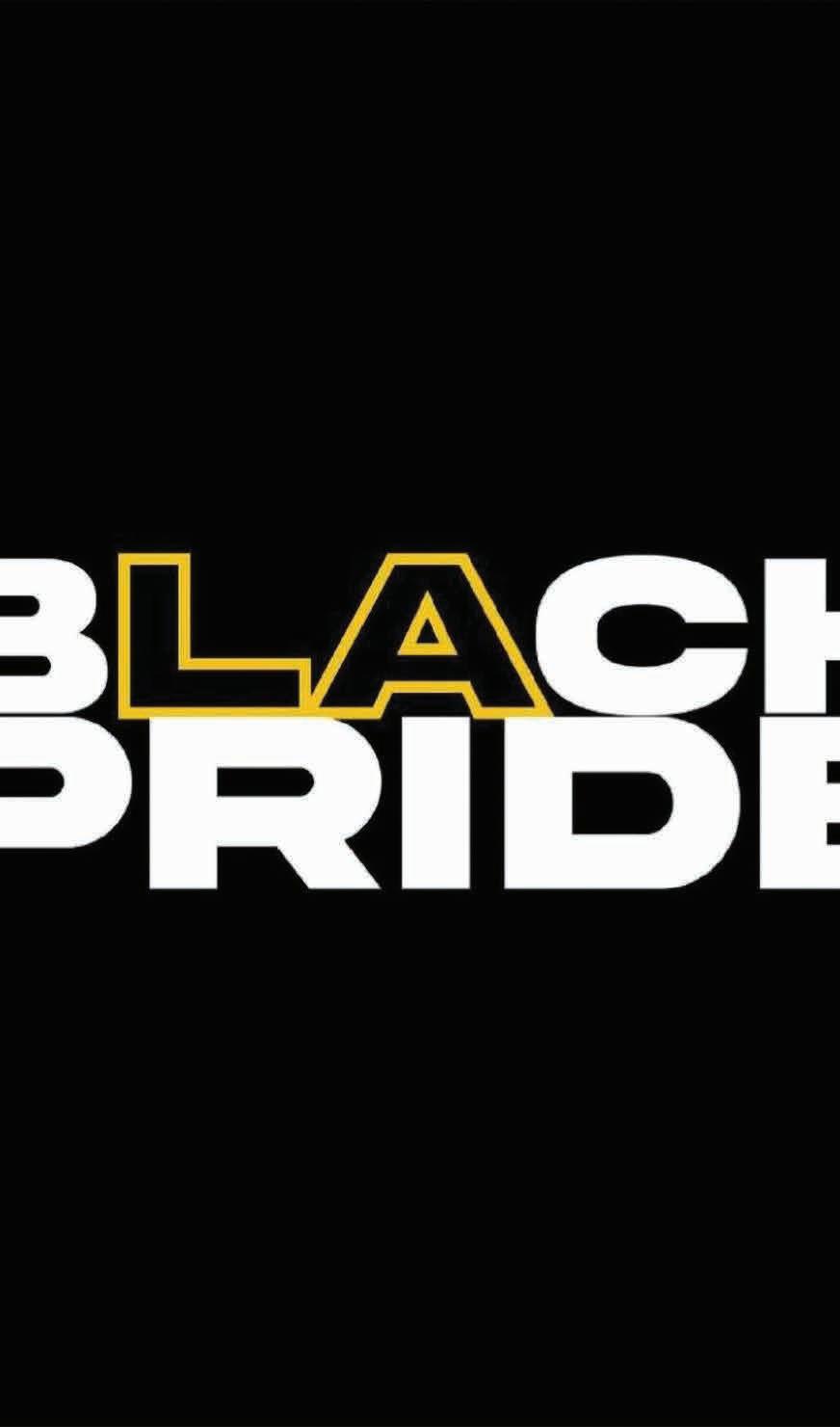




















By GISSELLE PALOMERA
This Pride month, the Getty Center has opened two new photography exhibits that highlight queer and trans history in moments, glimpses and memories frozen in time.
Queer Lens: A History of Photography and $3 Bill: Evidence of Queer Lives are now open to the public at the Getty Center in Los Angeles from now through September 28.
Queer Lens, the featured exhibition curated by Paul Martineau, features photography prints that span two centuries, capturing LGBTQ life through various lenses and perspectives.
“Queer Lens takes a theme that is often hidden and gives it a high level of visibility,” said Robert Tuttle, director of the J. Paul Getty. “The exhibition explores how, despite multiple forms of discrimination, LGBTQ+ individuals have shaped art and culture in innumerable ways, and how photography was and continues to be a powerful tool in the representation of the queer experience.”
The exhibition brings together over 270 works that include vintage prints, books, magazines and even the latest trend in photography — portraits created using Artificial
Intelligence. The exhibition highlights photography’s unique role in preserving the lives and experiences of queer and trans people from the 19th century to present day.
Queer Lens features eight chronological sections that shape, trace and highlight the dynamic intersection of LGBTQ life and image creation during pivotal moments in history such as the AIDS crisis, the rise of the Gay Liberation Movement and many other historical moments.
The eight sections are titled: Homosocial Culture and Romantic Relationships, Language and Identity, The Pansy Craze, Hiding in Plain Sight, Rise of the Gay Liberation Movement, The AIDS Crisis, Friends of Dorothy, Things are Queer and The Future is Queer.
The exhibition was designed to take viewers on a journey through not only time and space, but also through the struggles and tribulations that queer photographers and their queer subjects had to endure throughout centuries. Many of the subjects in the photos places in the exhibition have their faces covered, or have been posed in a way that purposely hides their identities during a
time where it was illegal and unacceptable to be queer or trans. Many of the earlier photographs also have other clever forms of concealing the identity of their subjects by either using makeup, double exposures, layered media or other creative processes.
$3 Bill: Evidence of Queer Lives celebrates the contributions of LGBTQ artists from the past century through an exhibition highlighting the journey of resilience, pride and power. This exhibition is meant to openly acknowledge the complex history of the word “queer” and the reclamation of the word by and for the LGBTQ community. The goal here is to offer and embrace a different, more empowering context of the word.
Viewers are meant to understand the historical moments in the photographs and the journey that queer and trans people have taken throughout time to get to where we are now. Though it is still not illegal here in the U.S. to be queer or trans, we are now again facing moments and events that feel eerily similar to many of those historical moments immortalized in the exhibit. Those moments drove queer and trans ancestors to revolu-

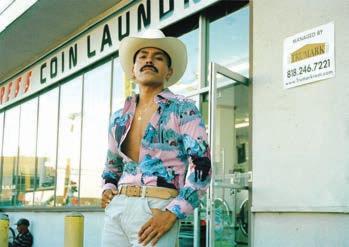
tionize and to take matters into their own hands to make change happen.
The exhibitions will be open throughout summer and are both offered in English and Spanish.
Along with the exhibitions, the Getty Center will also be hosting film screenings of The Watermelon Woman and Tongues Untied, as well as conversations on Ancient Greek Homoeroticism and Modern Queer Beauty, and an Artists POV conversation by queer, LAbased photographers.
For more information on the events or exhibitions, visit the Getty Center’s homepage
L.A. Black Pride honors Noah’s Arc TV series with Community Legacy Award
As the show marks its 20th anniversary, it’s returning with a highly anticipated new chapter
By AJ SLOAN
Two decades after Noah’s Arc changed the game for queer, Black storytelling in Hollywood, Patrik-Ian Polk returns to Los Angeles Black Pride for a legacy celebration honoring the sparkling new chapter in the show’s story. Grab your popcorn…
During LABP s finale event on Sunday, July 6 at The Abbey, the festival will present its Community Legacy Award to director, producer and trailblazing storyteller Patrik-Ian Polk. Polk is known for creating Noah’s Arc, a show that premiered 20 years ago on Logo TV — the first queer-centered commercial cable network. It’s a more-than-appropriate tribute as Polk s iconic series helped define Black queer media and its influence remains undeniable today.
“The idea for Noah’s Arc was born over 20 years ago at the opening night party for Black gay Pride in Los Angeles,” recalled Polk. “I was struck with the idea to create a Black gay Sex and the City-type series. I literally declared to myself at that party that I was going to make it happen. I vowed that within one year the show would be a reality. And it was.”
A Polk announced that Noah’s Arc: The Movie, will debut this summer. The reunion is a nostalgic and formidable reminder of how
vital Black queer storytelling remains today.
This year, LABP’s programming reflects that vision more than ever. With community panels, wellness activations, art installations and nightlife events curated specifically for Black LGBTQ audiences, the weekend is about visibility and shaping our future.
Part of this future means honoring and celebrating those pioneers who laid the groundwork.
Each summer, thousands of Black LGBTQ folks join together in Los Angeles to celebrate who we are, reclaim space, share our joy and continue to write our communal story. Over the years, LABP has evolved from a weekend of parties, into a powerful cultural movement. It serves up a dynamic blend of celebration, storytelling, wellness and activism that honors every aspect of Black queer life.
LABP is a pulsing and vibrant archive where history is not just remembered but made, where our chosen family comes together and where new generations of creatives, organizers and leaders emerge. Under the guidance of cultural producer Brandon Anthony, LABP has come to be a platform for expression and impact, holding a mic to Black and brown queer voices that are far too often left on the
margins of mainstream Pride narratives.
Originally premiering in 2005, Noah’s Arc was the first scripted television series to center the lives of Black, gay men. It was groundbreaking in its portrayal of love, intimacy, vulnerability and friendship. Set against the backdrop of Los Angeles, Noah’s Arc gave us characters who felt real to those watching. For so many, it was the first time seeing themselves fully reflected in television.
“LA has always been a hub for Black queer creativity and culture,” said Polk. “But there are fewer and fewer spaces like that today and fewer events that spotlight our stories in full color. So I’m truly honored to be recognized, and I’m glad to see LA Black Pride and innovators like Brandon Anthony continuing to center and celebrate our community in meaningful ways. It is sorely needed.”
LABP’s commitment to centering and uplifting BIPOC queer narratives is genuine and intentional. As corporate Pride celebrations more often than not lose sight of grassroots needs and at times, reality, LABP’s undertaking is both critical and necessary. Here, heritage and foresight go hand in hand. Through its awards, art-centric events and community programming, LABP celebrates and sustains
Black queer voices. For Brandon Anthony, who has reimagined LABP with a focus on accessibility and authenticity — the mission is clear.
“We re creating the space we ve always deserved. That means programming that reflects our culture, leadership that reflects our lived experiences, and events that pour back into the community.”
As Black queer youth, elders, artists, and allies come together for this year’s festivities, they do so in celebration, more importantly, in solidarity. LABP is a sanctuary, yes, but it is also a statement.
We are here. We have always been here. And our stories matter.
Polk’s recognition at LABP is a full flex in Black queer history. A show idea that started at a Pride party two decades ago is now being celebrated by the very community that inspired it. And with a new generation of storytellers ready to make their mark. Los Angeles Black Pride continues to champion voices like Polk’s while creating space for the next wave of storytellers to rise by honoring, sharing and supporting their stories. There will be music, mimosas and maybe a few tears of joy along the way.


‘It’s
By GISSELLE PALOMERA
Last week, the Supreme Court of the United States — which currently holds a 6-3 conservative majority — ruled in favor of maintaining a ban on gender-affirming care on youth in Tennessee.
Tennessee’s SB1 prohibits medical treatments or courses of action intended to treat gender dysphoria or affirm gender transitions for youth. The question back in December when the courts heard the oral arguments, was whether or not SB1 violates the Equal Protection Clause of the Fourteenth Amendment or Section 1557 of the Affordable Care Act, which prohibits sex or gender-based discrimination.
The U.S. v Skrmetti case, originally filed in late 2023, was filed on behalf of Jonathan Thomas Skrmetti and two other families. Now, this is the first time the Supreme Court has directly considered how the Equal Protection Clause in the Fourteenth Amendment applies to trans, gender non-conforming and intersex youth.
Chief Legal Officer at Lambda Legal, Jennifer C. Pizer spoke at a press conference hosted by FLUX, an L.A.-based advocacy organization for trans, gender non-conforming and intersex people, along with representatives from the L.A. LGBT Center and Gender Justice L.A.
“ You are not alone,” said Queen Victoria Ortega, Chief Visionary Officer at the Connie Norman Transgender Empowerment Center, and International President at FLUX. Queen Victoria stated that through her own transition at a young age, she was able to embrace herself fully with the support of her family and continues to live a happy life without regret.
“ And for those of you who think this issue doesn ’t affect [you], it s time to wake up,” said Ortega, urging those outside of the transgender, gender non-conforming and intersex (TGI) community to act now as other rights, like reproductive rights, get taken away.
“ Not only have reproductive rights been affected, but now the rights for parents that support their kids in their transition. This sets a dangerous precedent for criminalizing not only parents, but kids, and physicians.”
“ I call for all Americans and legislators that are also part of the fabric of the United States, to think about what it means to have access to life-saving medication. Not only hormone-replacement therapy, but also mental health services and a myriad of other wrap-around services…,” she said.
Pizer stressed the importance of understanding the sex-based discrimination in this ruling.
“ What I want to stress is that while the decision is going to mean a lot of hardship for some wonderful
families and young people in particular in Tennessee. The decision itself is very narrow. The Supreme Court majority opinion written by the Chief Justice, spends a lot of ink on the limitations of the decision,” said Pizer.
“ The decision is limited to the medical care context, and the Supreme Court has in a number of prior cases, used a different kind of Equal Protection analysis for minors and age classifications in the law have also been looked at more leniently than other classifications.
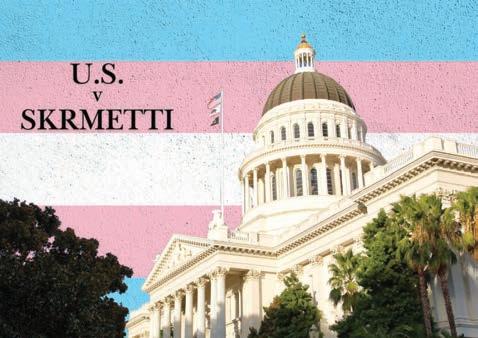
Many non-LGBTQ youth are and will continue to be able to access gender-affirming care, but TGI youth are not able to access it. This ruling limits access to gender-affirming care that other youth who are not transgender, are able to access.
The state of Tennessee argues that this gender-affirming care is dangerous and unproven and has other unintended consequences. Pizer says that if that were true, the care itself would not be accessible to other youth in the state.
“ It just doesn ’ t hold together logically,” said Pizer.
“ We have quite a few legal arguments and the Supreme Court took pains to say that it is not ruling on the other arguments that we have.”
According to Pizer, Lambda Legal is committed toward continuing the fight against these laws that ban treatments.
“ What I want to reinforce is that this issue comes up at a time of unjustifiable and cruel attacks on our community and we are standing together at Lambda Legal. We are determined to do this work until we achieve equal justice under law, for all of us LGBTQ people, and especially the trans, nonbinary, gender non-conforming, [intersex] siblings, parents, neighbors, friends and loved ones,” she said.
According to Pizer, this is a “ very obvious case of
sex-based discrimination.”
While some cisgender youth are able to hormone-replacement treatment and puberty-blockers, trans, gender non-conforming and intersex youth are now unable to access that same care.
Los Angeles LGBT Center CEO, Joe Hollendoner spoke on the issue as well.
“ I wish to acknowledge how extremely cruel the Supreme Court ’ s decision was today, especially in light of this being Pride month,” said Hollendoner. “ What I want to assure you is that the LA LGBT Center, the world ’ s largest LGBT organization and proud provider of gender-affirming care, that we are not going to stop providing this life-saving and essential care.”
Hollendoner called on all healthcare institutions in states that have “favorable laws” that protect access to gender-affirming care, especially to minors, to step up in this moment to protect trans people. He called on blue states to step up and for institutions here in California like the Children’s Hospital Los Angeles, to reverse their “horrible and harmful” decision to stop their gender-affirming care programs.
Gender Justice L.A. was on the ground to discuss their resources and course of action going forward.
“ We ’ re here as a community grassroots organization to support [the families of trans youth] and in solidarity and we will be coming together to rally in support,” said Ace Anaya, campaign coordinator at Gender Justice L.A.
Equality California also issued a statement regarding the ruling.
“As Justice Sotomayor stated in her dissent, ‘ the majority subjects a law that plainly discriminates on the basis of sex to mere rational-basis review. By retreating from meaningful judicial review exactly where it matters most, the Court abandons transgender children and their families to political whims… It also authorizes, without second thought, untold harm to transgender children and the parents and families who love them. Because there is no constitutional justification for that result, I dissent,’” said Tony Hoang, executive director at Equality California.
Senator María Elena Durazo (D-Los Angeles) issued a statement on behalf of California: “This 6-3 ruling allows states to ban life-saving gender-affirming medical care, putting vulnerable young people at risk. California has always stood as a beacon of hope for LGBTQ families, and we will not waver in that commitment,” she said. “ We will continue to welcome families fleeing discrimination and ensure access to comprehensive healthcare. This decision does not reflect our nation ’s values of equality, dignity, and freedom.”

By CHRISTOPHER KANE | ckane@washblade.com
In a devastating loss for transgender youth and their families, the U.S. Supreme Court’s conservative supermajority on June 18 voted to uphold Tennessee’s law banning access to gender-affirming health care for minors in a 6-3 ruling that effectively shields similar restrictions in more than 20 other states.
Chase Strangio, a lead attorney for the plaintiffs in U.S. v. Skrmetti and the first trans lawyer to argue before the nation’s highest court, acknowledged the “setback” during a press call with reporters while stressing the need to “continue onward in the fight” because the avenues open to challenge laws like Tennessee’s Senate Bill 1 had not been fully extinguished.
Speaking with the Washington Blade on Monday, Professor Holning Lau of the University of North Carolina School of Law outlined the ramifications of the justices’ majority opinion and mapped out three ways in which cases aimed at striking down healthcare bans or other anti-trans policies and practices could play out in its wake.
An internationally recognized expert on equality rights, particularly in the contexts of sexuality, gender, and family life, Lau previously served as president of the ACLU of North Carolina’s board of directors and as a teaching fellow at UCLA’s Williams Institute on Sexual Orientation and Gender Identity Law and Public Policy.
He is also the co-author of a recent paper that examines the exceptions to laws prohibiting medical interventions for gender transitions in minors that permit “so-called gender-normalizing surgeries, which are performed on intersex infants to conform their bodies to socially constructed expectations about the male/female binary.”
These carveouts, Lau and his colleague UNC Law School Associate Professor Barbara Fedders argue, cut against the reasoning cited by the lawmakers behind legislative restrictions targeting healthcare for trans youth like SB 1 and by the lawyers defending them in court.
Specifically, Lau told the Blade courts could interpret such “intersex exceptions” as evidence that gender affirming care bans were written with or are undergirded by sex stereotypes, unwarranted fears, and disgust — possible grounds to argue they should be struck down under the animus doctrine, which holds that government action motivated by hostility or prejudice towards a particular group is unconstitutional.
While there was some discussion of animus in the context of U.S. v. Skrmetti, notably in the concurring opinion by conservative Justice Amy Coney Barrett, the plaintiffs’ case focused primarily on “the sex discrimination argument because of Bostock v. Clayton County,” Lau said, referring to the 2020 Supreme Court case that determined sex-based discrimination in the context of employment, as defined by federal civil rights law, includes discriminatory conduct that is motivated by the victim’s sexual orientation or gender identity.

Five years after LGBTQ rights advocates were toasting their victory in the landmark case, which saw three of the conservatives on the High Court joining their liberal counterparts in a majority opinion written by Justice Neil Gorsuch, “a lot of folks may have reasonably thought that the logic of Bostock points towards this very straightforward sex discrimination argument,” Lau said, adding that liberal Justice Sonia Sotomayor “adopts that avenue of reasoning in her dissent” in Skrmetti.
“The way that the majority rejects the sex discrimination arguments in in the majority opinion of Skrmetti is not persuasive in my view,” he said. “I struggle for words to capture the reasoning of the majority opinion.”
Echoing Strangio’s remarks, Lau noted that Skrmetti “doesn’t completely close the door” to legal challenges but is nevertheless “a huge, huge setback.”
On the one hand, he said “lower courts might say that this was very much about the context of medical treatment and minors,” which means “there may still be cases that prevail having to do with trans-
gender discrimination in other contexts, like the military ban or the restrictions on passports.”
At the same time, however, Lau cautioned that “you could also read this case as signaling more obstacles ahead, especially if a case gets back to the Supreme Court” since “three of the justices have already signaled in Skrmetti that they do not view gender identity discrimination as warranting heightened scrutiny.”
Litigation aside, young people and their families who will suffer the most direct and harmful consequences, namely the loss of access to medically necessary gender-affirming care, will have to navigate “a patchwork of state laws,” he said, which in many cases will mean relocating or traveling out of state for treatments that have been criminalized in the places where they live.
The Supreme Court’s 2022 decision in Dobbs v. Jackson Women’s Health Organization, which overturned the nationwide right to abortion, led to many of these same outcomes, he said. In an email following Monday’s phone interview, Lau further explained that “Dobbs unleashed conflicts between states, and there are signs that similar conflicts will arise with respect to gender-affirming care for trans youth.”
For example, he said “A growing number of states might seek to penalize interstate travel for gender-affirming care — targeting families who travel across state lines and/or medical providers who provide care to such families.”
“There is ongoing litigation concerning the constitutionality of interstate bans and shield laws in the abortion context, and those cases will bear significance on interstate bans and shield laws regarding gender-affirming care,” Lau said.
Counsel for the plaintiffs in Skrmetti probably turned to Bostock because the case was “the most recent victory, and the most on point when it comes to gender identity,” Lau said.
The animus doctrine was an important element of cases that expanded equal rights and protections for LGBTQ people, he said, pointing to U.S. v. Windsor (2013), which struck down portions of the Defense of Marriage Act, a law that prohibited the federal government from recognizing same-sex marriages, and Romer v. Evans (1996) which struck down a Colorado statute prohibiting the state from enacting any LGBTQ inclusive nondiscrimination rules.
Lau said those cases are examples of
where the Supreme Court has found indirect evidence of impermissible animus in the laws under consideration by the way they were designed or structured, as opposed to more direct evidence like overt expressions of sex stereotypes, fear, and disgust toward a particular group that might arise during the legislative process.
These cases and the animus doctrine, Lau added, are closely associated with the late former Justice Anthony Kennedy, an appointee of President Ronald Reagan who was the “swing vote” responsible for ultimately deciding many of cases considered by the Roberts court where the justices were split 5-4.
Following his retirement in 2018 and the emergence of a 6-3 conservative majority, there is less certainty about how the justices might evaluate animus related arguments in the context of disputes over issues of gay or transgender rights, Lau said, especially relative to how they were expected to look at the reasoning central to the Bostock decision just five years ago. “I would have liked to see more” engagement with animus in the Skrmetti opinions, Lau said. Barrett in her concurrence did address the question, writing that there was a rational basis for Tennessee legislators’ SB 1, in contrast with the court’s findings in Romer, where the “sheer breadth” of law was “so discontinuous with the reasons offered for it that the [law] seem[ed] inexplicable by anything but animus toward the class it affect[ed]”.)
“To be sure, an individual law ‘inexplicable by anything but animus’ is unconstitutional,” Barrett said. “But legislatures have many valid reasons to make policy in these areas, and so long as a statute is a rational means of pursuing a legitimate end, the Equal Protection Clause is satisfied.” Lau said that notwithstanding her position on Skrmetti, the fact that Barrett “did make reference to the animus jurisprudence suggests that there is potentially a future for animus doctrine, even in the post-Kennedy Supreme Court.”
Rather than the animus doctrine or Bostock’s reasoning that gender identity discrimination constitutes sex based discrimination, the court relied on Geduldig v. Aiello (1974), Lau said, which found that pregnancy discrimination “is not a type of sex discrimination” and remains a case that “strikes so many people as being incorrectly decided.”
Continues at losangelesblade.com.

By MK SCOTT
It was 10 years ago this week — on June 26 — when gay marriage became the law of the land with the landmark Supreme Court decision Obergefell v. Hodges. Both Jim Obergefell and Freedom to Marry founder Evan Wolfson contributed to the foreword of a new coff ee table book, “LOVE: The Heroic Stories of Marriage Equality,” curated by photographer Frankie Frankeny and writer John Casey.
With the current political climate, many fear that marriage equality could be overturned. In my last interview with Evan Wolfson back in 2017, Trump had just started his fi rst term. I asked him then, “Is gay marriage safe?”
Here’s what he said:
“Look, anything can happen. So I don’t think we should ever be complacent or give up or stop working. Even though the election was a catastrophe and our country is very much on the wrong path, I actually think there are other communities, values, and causes we care about that are more in danger. If we stand in solidarity with others and keep moving forward, we will also secure our own gains.
“I’m not really worried they’re going to take away the freedom to marry. That’s a very hard thing to do. Even former or current opponents are mostly focused on other things.
“We won the freedom to marry not just in court, but by shifting public opinion— growing support from 27% when I argued the fi rst trial in Hawaii to 63% in 2015 when the Supreme Court ruled. That didn’t go away on Election Day. More than a million gay people have gotten legally married in the U.S.—and each of those marriages represents family, friends, and allies who support them. That didn ’t go away either.
“We won over a hundred court rulings before the fi nal one, and that legal foundation didn’t disappear. We built ‘facts on the ground,’ shifted opinion, mobilized allies. We have to keep doing that work.
“And Gallup just reported record-high support for marriage equality—up to 47% even among Republicans. So yes, we need vigilance, but I don’t think losing marriage equality is the biggest threat we face.”
I recently asked Wolfson if he still stands by that statement.
“So far, I stand by everything I said,” Wolfson responded. In our new conversation, Wolfson elaborated:
“There are other communities and values in more immediate danger. If we stand in solidarity and keep moving forward, we’ll secure our own rights too.
“I’m not worried they’re going to take away the freedom to marry. That’s extremely diffi cult to undo. Even our opponents have moved on to other battles.
“Let’s remember how we got here: by winning over public opinion through years— decades—of organizing, storytelling, and showing up. When we stood before the court in 2015, public support had climbed from 27% to 63%. That was no accident. And it hasn’t gone backward.
“Of course people are worried now. There’s a lot to worry about. But sitting around cataloging 100 possible future disasters won’t help. If you’re worried—about marriage, about immigrants, about anti-Semitism, the economy, women’s rights, trans rights, democracy—then the answer is to get to work. Worry doesn’t protect us. Action does.”
He added:
“It’s hard to undo a right. It can happen—look at Dobbs overturning Roe v. Wade— but it’s rare. And even if the Supreme Court were to roll back Obergefell, we put a fallback in place: The Respect for Marriage Act.
“Thanks to that bipartisan legislation—signed by President Biden on the White House lawn—any marriage performed legally in one state must be recognized in all 50 states and by the federal government. Even if Obergefell fell, couples could still marry in states where it remains protected and be recognized national ly.
“That act passed with support from Republicans, including some who once voted for the so-called Defense of Marriage Act.
“So yes, I understand the fear. But fear alone won’t protect us. We all need to do the work—each in our own way.”
Wolfson also refl ected on the broader threats to democracy:
“None of us is 100% safe from the assaults and corruption of this current regime. That’s why we must reclaim political power—by electing better lawmakers, reforming the courts, and reaffi rming the rule of law, democracy, and pluralism.

That’s not just an LGBT issue—it aff ects everyone. But queer people, especially trans people, are among those most targeted. And we’ve seen how divide-and-conquer politics and demonization are weaponized to climb to power .
“The trans conversation is at an earlier stage than that for gay people, which makes it more vulnerable. Republicans are exploiting that. And yes, some missteps in our activism have made things harder. But we can course-correct.
“Books like Frankie’s remind us of what we’ve already overcome: the AIDS crisis, Reagan-era discrimination, legal persecution. We rose to those challenges, and we can rise to this one.”
As Wolfson puts it:
“This is our generation’s call to action. We have to respond. And if we do it together—with solidarity and purpose—we will protect the people and v alues we love.”
“LOVE: The Heroic Stories of Marriage Equality” includes more than 360 pages of wedding photos and stories that are inspiring to read. The book is available everywhere.

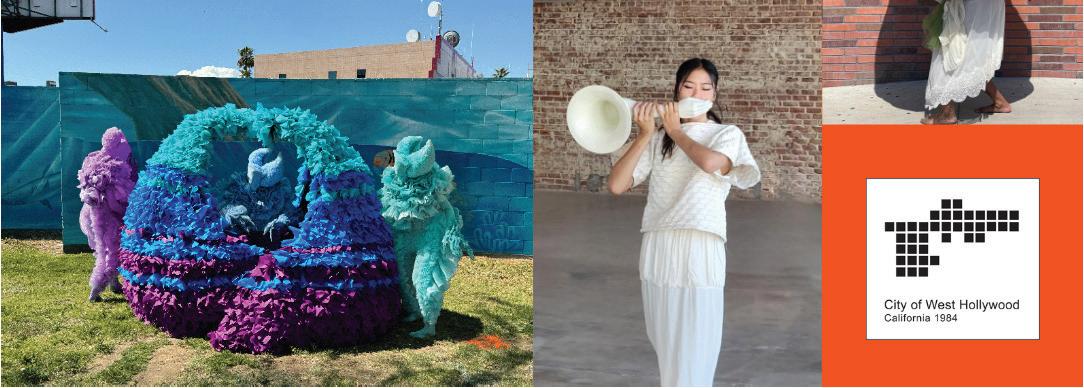
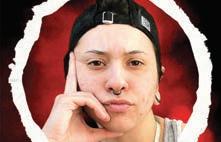
is local news editor of the Los Angeles Blade. Reach them at gpalomera@losangelesblade.com.
Amid more upcoming raids and protests, we will have to learn when to act, how to react and when to find pockets of joy to celebrate in, because those moments are also acts of resistance
While many Angelenos celebrated the 55th annual L.A. Pride and mainstream news outlets like ABC7 and FOX11 news covered the celebrations, the reality for many other Angelenos involved tear gas, rubber bullets and breaking news coverage from community-led outlets like CALÓ News.
If we were to take a step back into the history of Pride, we would be angered by the amount of violence and pain that led to the protests on the dawn of June 28, 1969. The Stonewall uprising took place as a result of police raids at the now-infamous Stonewall Inn on Christopher Street in New York City. The night that has gone down in history as a canon event for queer and trans life began when police raided the Stonewall Inn and arrested multiple people. The arrests and the police brutality involved, led to an uprising that lasted a total of six days.
Marsha P. Johnson and Sylvia Rivera were credited as being the first people in that historical moment to start the movement we now know and celebrate as Pride. They were Black and brown, people who transformed our notions of fear and action, modeling the mantra that we must act in order to not live in fear. The people at the Stonewall Inn on that night in June all those years ago, and all of the queer and trans people now, have something deeply unsettling in common.
We both live in a constant state of fear and anxiety.
We live in such a major state of fear that anxiety, depression and other mental health issues — including substance abuse disorders — tend to be particularly prevalent in the LGBTQ community. According to Mass Gen, the U.S. is facing a mental health crisis, with nearly 40% of the LGBTQ population in the U.S. reported experiencing mental illness last year, a figure of around 5.8 million people.
Pride began as the very type of protest that went on this past weekend over the U.S. Immigration Customs Enforcement (ICE) raids, where people have been taken into custody, reporters shot with rubber bullets and tear-gassed, and where union president David Huerta was taken into custody and charged with alleged federal conspiracy charges.
Over the weekend, I celebrated Pride. I admittedly celebrated being queer, while my other communities experienced fear in the face of arrests, tear gas to the eyes and baton blows to the head. It was an internal battle I was not prepared for and a real battle on the streets I was not ready to experience. It made me feel weak and more than anything, I felt tired. I felt scared and I felt like I was not prepared for what was to come from these arrests and this violence.
I am a proud child of immigrants. My mother is Colombian and migrated here in the early 80s, settling down in West L.A and building a life with children, houses and her religious community.
My father migrated here in the mid-to-late 80’s from Mexico, where he and his family were hardworking farmers. He has worked at his job, without rest, for over 35 years. He rose up the ranks from line worker to general manager. He does not miss work. He follows every rule and he is never late. Both are documented, but only because of luck and the ease of getting papers back when there weren’t so many bureaucratic steps to gaining citizenship or a green card legally.
My parents and their extended family are proof of a now-distant American Dream, one in which we gain status, we become homeowners and business owners, have children and send them off to college to
learn things that our parents can’t even imagine.
Though they did the best they could, my parents had other challenges and barriers to their success. So I worked hard in order to succeed for them. I did it for all of the people in my communities. I did it to raise the statistics on Latinx people, LGBTQ people and former foster youth who go on to college despite the odds and get higher education degrees.
My road to where I am now was paved with uncertainty, food insecurity, homelessness and many other factors that pushed and pulled me back. The analogy I can think of to accurately compare myself to is a catapult. I was pulled down with weights that were added on more and more, until one day I catapulted forward into the life I now have the privilege to live. Though I still struggle in many ways, it is the first time in my life that I am not in survival mode. It’s the first time in my life that I get to exist as a queer person who can enjoy life, build a friend group and establish deep connections with people. It’s also the first time I get to enjoy Pride as someone who is single and who has spent the past 18 months healing from my last relationship.
It was the first time in my life, as a lesbian who’s been out for over a decade, that I truly planned to enjoy Pride with my groups of friends. While I was there this weekend, my internal battle began and I felt torn between celebrating my life and my queerness and covering the ICE raid protests happening not too far from Sunset Blvd.
What I didn’t expect was to see so many other people at Pride, completely oblivious and completely disconnected from the history of Pride, instead glorifying corporate brands and companies that have remained silent over LGBTQ issues, while others have gone as far as rolling back their Diversity, Equity and Inclusion initiatives.
If Marsha P. Johnson or Sylvia Rivera were there at that moment, they would have convinced us to merge our Pride celebration with the protests. They would have rallied us all to join forces, and in the spirit of Pride, we would have marched for our immigrant community members, fighting for their right to due process.
I’m not sure if I made the right decision or not, but the next 60 days will say a lot about every single one of us. We will have to learn when to act, how to react and when to find pockets of joy to celebrate in, because those moments are also acts of resistance.
The Trump administration vowed to strip away rights and has made it their mission to incite violence, fear and anxiety among all working class, BIPOC and LGBTQ people, so it is important, now more than ever, to unite and show up for each other, whether you’re at a Pride celebration or a protest.
The next 60 days will raise our anxiety and fear, but we must remember to also take breaks, celebrate wins, relish in community, hug your loved ones and use whatever amount of privilege that you have, to show up for the communities that are hurting the most in these moments.
Juneteenth is also coming up soon and I hope to see more of us rally around our Black brothers, sisters and siblings, to not only fight for our rights, but to continue celebrating ourselves and each other.
In the words of Marsha P. Johnson: “There is no pride for some of us, without liberation for all of us.”
PHONE 310-230-5266
E-MAIL arodriguez@losangelesblade.com
INTERNET losangelesblade.com
PUBLISHED BY Los Angeles Blade, LLC
PUBLISHER
ALEXANDER RODRIGUEZ
arodriguez@losangelesblade.com, 310-230-5266 x8080
EDITORIAL
EDITOR
GISSELLE PALOMERA
gpalomera@losangelesblade.com, 310-230-5266 x 9460
NATIONAL EDITOR
KEVIN NAFF
kna @washblade.com, 202-747-2077 x8088
CONTRIBUTING WRITER
KAREN OCAMB
karenocamb@losangelesblade.com
CONTRIBUTORS
MICHAEL K. LAVERS, TINASHE CHINGARANDE, CHRISTOPHER KANE, JOHN PAUL KING, LOU CHIBBARO JR., SUSAN HORNIK, JOE REBERKENNY, DANIEL ITAI, ISAAC AMEND, PETER ROSENSTEIN, TERRI SCHLICHENMEYER, JOE PHILLIPS, ANKUSH KUMAR, ESTEBAN RIOSECO, SAM KISIKA, ELVIS KAWEDO, HENRY CARNELL, DAWN ENNIS
SALES & ADMINISTRATION
SALES EXECUTIVE
SHANA WONG SOLARES swong@losangelesblade.com, 808-386-0872
MARKETING DIRECTOR
STEPHEN RUTGERS
srutgers@washblade.com, 202-747-2077 x8077
NATIONAL ADVERTISING
RIVENDELL MEDIA
sales@rivendellmedia.com, 212-242-6863
ADMINISTRATION
PHILLIP G. ROCKSTROH prockstroh@washblade.com, 202-747-2077 x8092
CREATIVE DESIGN/PRODUCTION
MEAGHAN JUBA production@azercreative.com
DISTRIBUTION
CHRISTOPHER JACKSON, 562-826-6602
All material in the Los Angeles Blade is protected by federal copyright law and may not be reproduced without the written consent of the Los Angeles Blade. e sexual orientation of advertisers, photographers, writers and cartoonists published herein is neither inferred nor implied. e appearance of names or pictorial representation does not necessarily indicate the sexual orientation of that person or persons. Although the Los Angeles Blade is supported by many ne advertisers, we cannot accept responsibility for claims made by advertisers. Unsolicited editorial material is accepted by the Los Angeles Blade, but the paper cannot take responsibility for its return. e editors reserve the right to accept, reject or edit any submission. A single copy of the Los Angeles Blade is available from authorized distribution points, to any individual within a 50-mile radius of Los Angeles, CA. Multiple copies are available from the Los Angeles Blade ofce only. Call for rates. If you cannot reach a convenient free distribution point, you may receive a 26-week mailed






is the HIV/Aging Policy Advocate at SAGE where she implements the organization’s federal and state HIV/aging policy priorities.
We can’t afford
in fight against HIV
A dangerous message about whose lives are deemed worth protecting
Right now, members of Congress are considering a budget proposal that would rip away life-saving health care coverage, particularly Medicaid from millions of people in the United States. This isn’t just unjust—it’s dangerous.
Since the late 1970s, there has been a strong push to advance the rights and well-being of LGBTQ+ elders, including the growing number of people aging with HIV. This community faces unique and often complex quality of life issues that require consistent, comprehensive care. Medicaid provides essential coverage for these services, including access to HIV medications, primary and specialist care, long-term care, and behavioral health support. Proposed cuts to Medicaid would destabilize this vital lifeline, threatening the health and dignity of one of the most medically vulnerable and historically marginalized communities in our country.
Congress is deciding just how deeply Medicaid could be cut. What’s at stake amounts to one of the most significant threats to public health in recent memory— one that would have a devastating impact on people aging with HIV.
The facts are clear: Medicaid is the single largest source of health care coverage for people living with HIV in the United States, covering roughly 4 in 10 people living with the disease. Many of those individuals are older people who rely on Medicaid not just for access to HIV treatments, but for managing other conditions that often accompany aging with HIV—such as cardiovascular disease, cognitive issues, and diabetes.
We have made remarkable progress in responding to HIV. Today, with effective treatment, people living with HIV can lead long, healthy lives. When HIV is suppressed to undetectable levels, it cannot be transmitted sexually. But this progress depends on consistent access to care. Without Medicaid, many people risk losing access to the medications that keep them healthy and alive—and that help prevent the transmission of HIV.
Moreover, Medicaid expansion has been directly associated with increased access to PrEP, a medication that is up to 99% effective at preventing HIV acquisition. Scaling back Medicaid would not only affect people already living and aging with HIV, but it would also limit preventive care that is essential to reducing new cases of HIV. In a world that too often dismisses older people as non-sexual and overlooks their need for HIV prevention services, the last thing we need is to further restrict access to sexual health services.
Older people with HIV often experience higher levels of isolation, stigma, and economic insecurity. They are more likely to be housing insecure and to have little
to no family support. Medicaid helps older people maintain independence and age with dignity. Cutting Medicaid isn’t just a policy decision—it would create real hardship and suffering in the community.
Across the country, advocates and service providers see this reality every day. Countless LGBTQ+ elders and people aging with HIV rely on Medicaid for basic care and services. But that security can disappear quickly. That’s why taking action—right now—to help protect Medicaid is critical.
Here’s what you can do:
Call your members of Congress at 866-426-2631 and tell them “No cuts to Medicaid.”
Write your members of Congress and tell them that Medicaid must be protected for people aging with HIV. Our colleagues at AIDS United have created a simple and effective tool to help you reach your representatives directly.
Join the SAGE Action Squad. When you sign up, you’ll receive alerts and updates on urgent advocacy issues affecting LGBTQ+ elders and people aging with HIV. It’s a powerful way to stay informed and engaged—and to ensure your voice is part of this movement.
We understand that budget decisions are complex. But we also believe that protecting health care for the most vulnerable members in our community should never be negotiable. Cutting Medicaid doesn’t just reduce spending—it puts lives at risk. It creates new barriers for people aging with HIV to access care, manage their health, and live with dignity. It also limits critical prevention services for those vulnerable to acquiring HIV, undermining efforts to end the HIV epidemic.
If enough of us act, we can help stop these Medicaid cuts from happening. We can ensure that Medicaid continues to serve the people who need it most.
SAGE has been at the forefront of this fight for decades. We’ve helped secure victories in access, equity, and representation. But we can’t do it alone. We must come together to defend the programs that safeguard the health, dignity, and future of our community. Cutting Medicaid would not only roll back progress—it would deepen disparities, put lives at risk, and send a dangerous message about whose lives are deemed worth protecting. We must speak out and demand that our elected leaders prioritize care over cuts. Let’s protect Medicaid. Let’s protect people aging with, and vulnerable to, HIV. Let’s protect our community—and build a future where every older person with HIV can age with health, respect, and pride.
With a little bit of ‘astrology woo-woo-ness, a little bit of magic woo-woo-ness, drag and fabulosity,’ they tether together the story of the relationship between them and their mother
Nonbinary, Puerto Rican icon, comedian, actor and activist, Vico Ortiz, 33, binds and weaves awkward childhood moments, family expectations, Walter Mercado and the love of their life embodied by a household mop, to tell the story of the rise of a king.
During the peak of Pride month, Ortiz gifted the Los Angeles queer and trans communities with a spectacularly queer, solo show featuring themself in their quest of self-discovery, a profound sense of connection and reconnection with their femininity and masculinity through growing pains and moments of doubt. This is a show that Ortiz describes as “wholesome, but burlesque.”
King Vico Ortiz rises
The show, which premiered on June 12, details Ortiz’s childhood, vignetting and transforming through their most formative years and through canon events that led them to their gay awakening, such as watching Disney’s Mulan (in Spanish) and the moment Ortiz cut their hair in honor of the scene where Mulan cuts hers off. Ortiz took the audience on a journey through their inner monologue during the moments in their childhood and into adulthood, where they not only come to terms with their identity, but also learn to understand the internal battle their parents went through as they watched their king rise.
Though Ortiz mostly only acted prior to writing and producing their first solo show, they finally took their opportunity to do things a little differently. Last June, their friend Nikki Levy, who runs a show called Don’t Tell My Mother, coached Ortiz to dredge up childhood memories and tether them in a way that could be told and understood by an audience as a show about queerness and self-discovery.
By GISSELLE PALOMERA

“[Levy] started asking me those questions that dig deeper into the emotional journey of the story, not just ‘hehe’ ‘haha’ moments, but there’s something a little deeper happening,” said Ortiz in an interview with the L.A. Blade. This is when they asked Levy to help coach them through the process of putting the story together in a way that Ortiz imagined it, but also in a way that made sense to the audience.
Ortiz says that with a little bit of ‘astrology woo-woo-ness, a little bit of magic woowoo-ness, drag and fabulosity,’ they tether together the story of the relationship between them and their mother.
“Astrology had a huge influence in my life growing up from the get-go,” said Ortiz.
“I was born and [my mother] printed my birth chart.” The Libra sun, Sagittarius rising, Scorpio moon and Venus in Virgo, says they have always known their chart and that not only did astrology play a huge role in their life growing up, but so did astrologer-to-the-stars Walter Mercado.
The solo was partly influenced by their mother and partly influenced by the iconic, queer, androgynously-elegant Mercado, who famously appeared on TV screens across homes in Latin America and the United States for a segment on that day’s astrological reading.
Seeing Mercado on that daily segment shaped Ortiz’s view of gender and began to understand themselves in a new-found light — one in which they saw their most authentic self.
“Seeing that this person is loved and worshipped by all these people who are like: ‘we don’t care that Walter looks like Walter, we just love Walter,’” said Ortiz. This is when they realized that they too, wanted to be loved and adored by the masses, all while fully embracing their masculinity and femininity.
The closing night show of ‘Rise of a King’ was a reminder of how unpredictable life can be and how darkness comes in on some of our brightest moments. Ortiz brilliantly pulled off an improv monologue during a 15-minute power outage. Though it was unpredictable, it was on theme. Ortiz owned the stage, going on about childhood memories that shaped them into who they are today and how they have reconnected with the imaginative child that once told the story of a half-butterfly, half-fish.
The rest of the show went according to plan, immersing the audience in a show that took us straight into the closet of Ortiz’s parents and where Ortiz not only discovered, but learned to embrace who they truly are — to the first moments they embraced the king within and outwardly began to show it to audiences, and eventually their mother.
The set, designed by Jose Matias, functioned as a walk-in closet that transforms throughout the show against the backdrop of drawings of Ortiz and their family memories projected on a big screen on the stage.
Ortiz’s original, solo-show had its world premiere at FUERZAfest in New York City, then its west coast premiere at L.A.’s own Hollywood Fringe Festival.
Follow @puertoricaninja for more updates on their upcoming work.


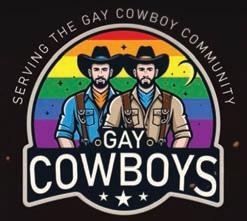

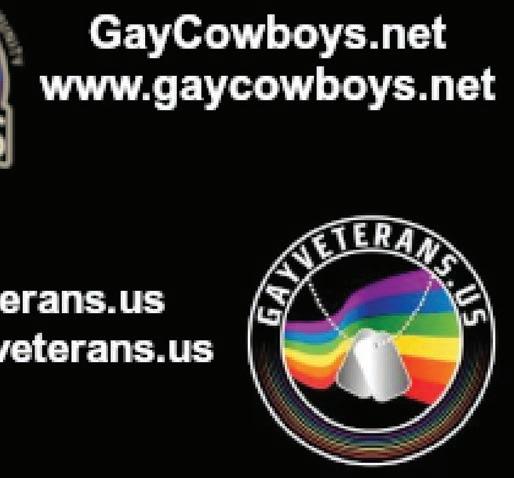







‘Voters have a special affinity for stories of self-discovery’
By JOHN PAUL KING
As the Academy of Television Arts and Sciences wrapped up the voting for nominations in its annual race for the Emmy Awards this week, much of Hollywood (and countless fans with favorite contenders of their own) was buzzing with speculation about who and what will be included when the final slate of nominees is announced on July 15 – but just in time for Pride Month, GALECA (The Society of LGBTQ Entertainment Critics) has stolen a bit of its thunder.
The second largest entertainment journalists group in the world, GALECA is made up of 560 members who, as the group’s press release proudly states, ”write and work for some of the most respected and buzz-worthy media outlets in the U.S. and beyond.” Last week, the organization announced its list of nominees for the 16th Annual Dorian TV Awards, representing the “queer eye’s” choices for the best in television and streaming, among both mainstream and LGBTQ content – and the list of contenders includes an exciting mix of A-listers, icons, and up-and-coming stars. This year’s performance and tribute categories – all of which are non-gendered – recognize such established talent as Beyoncé, Jean Smart, Colin Farrell, Colman Domingo, Michelle Williams, Pedro Pascal, Natasha Lyonne, Uzo Aduba, Bella Ramsey, Noah Wyle, and current flavorof-the-day “daddy” Walton Goggins, alongside such lesser-known names as Ncuti Gatwa, Katherine LaNasa, Owen Cooper, and (as GALECA puts it) “the actress who simply calls herself Holmes.”
For those unfamiliar with GALECA, it’s not just an organization that gets together to give out awards - though it presents Dorians for film, television, and theater at separate times during the year, its stated mission is to “remind society that the world values the informed LGBTQ perspective on all things entertainment.” A nonprofit organization, they advocate for better pay, access, and respect for entertainment journalists (especially from underrepresented demographics), and provide scholarships for LGBTQ journalism students.
can be found in small daily actions.”
The same empathy for underdogs can be perceived behind one of GALECA’s other awards, the unique Best Unsung Series category, which amplifies shows its members believe deserve greater attention. This year’s contenders include quirky queer creator Julio Torres’ wickedly inventive and amusingly absurd HBO satire “Fantasmas” and the final season of Paramount+’s controversial-but-popular supernatural drama “Evil,” as well as Hulu’s irreverent “English Teacher” (from queer creator/star Brian Jordan Alvarez) and Amazon Prime’s “Overcompensating,” about a former high school jock and closeted college freshman, inspired by the college experiences of creator and star, social media and internet comedian Benito Skinner, who also received a Dorian nod for his acting in the show.
Of course, there’s also a category for the Best LGBTQ Series, which singles out television content of particular relevance to queer viewers. This year, crossover titles “Hacks,” “Somebody Somewhere,” and “Overcompensating” are nominated here, too, alongside the third season of Netflix’s beloved YA romance “Heartstopper” and the campy Disney+ Marvel spinoff “Agatha All Along,” which also scored a nod in the Musical Performance category for “The Ballad of the Witch’s Road.”

As for this year’s nominated shows, there’s an equally exciting mix of competitors. In the Best Drama categories, three critical and popular hits – the surreal and unpredictable Apple TV+ office drama “Severance,” the unabashedly anti-fascist and queer-inclusive Disney Plus “Star Wars” prequel series “Andor,” and HBO/Max’s irresistibly provocative hotel drama “The White Lotus” – are in the race with six Dorian nominations each, while two others - gritty medical drama “The Pitt” and video-game-inspired sci-fi zombie saga “The Last of Us” – are close behind them with five each.
In the comedy department: HBO/Max’s “Hacks,” already a two-time Dorian winner in the Best Comedy category, leads the pack with its own six nods, and the same streamer’s upbeat dramedy “Somebody Somewhere” grabbed four, while ABC’s Abbott Elementary (another two-time winner) pulled in three. Other contenders include the colorful new Apple TV+ Hollywood satire “The Studio” and season two of “The Rehearsal,” creator-star Nathan Fielder’s hard-to-categorize HBO/Max offbeat “societal experiment” that endeavors to teach “average folks” how to deal with various wildly-hypothetical life problems.
According to GALECA Executive Director Diane Anderson-Minshall: “By loving-up series like ‘Hacks,’ ‘Somebody Somewhere,’ and even ‘The Rehearsal’ and ‘Andor’ – a sci-fi story of the beginnings of a major rebellion – Dorian Award voters once again have shown they have a special affinity for stories of self-discovery and pushing for more. Like generations of LGBTQ+ people who took on the battle for the right to be who they are, these nominated programs underscore that solidarity, morality, and justice aren’t just for superheroes, but
Speaking of camp, the Dorians would not be complete without GALECA’s most irreverent award. In the category of Campiest TV Show, “Agatha” is (surprisingly, perhaps) not among the nominees; however, Hulu’s exceptionally queer throwback sitcom “Mid-Century Modern,” which features stars Nathan Lane, Nathan Lee Graham and Matt Bomer as three gay besties who retire to Palm Springs together most deservedly is. The show – touted as a “gay ‘Golden Girls’” – also earned a posthumous Supporting Performance nod for beloved TV and Broadway legend Linda Lavin, who passed away before the series wrapped production late in 2024. Its competitors are Peacock’s deliciously dramatic Alan Cumming-led reality show “The Traitors,” Ryan Murphy’s over-the-top seafaring medical drama “Doctor Odyssey,” the aforementioned “Overcompensating,” and MTV’s eternal GALECA darling “RuPaul’s Drag Race.”
Among other award categories: Best TV Movie or Miniseries, which includes nominees like Netflix’s “Rebel Ridge” and HBO/Max’s “The Penguin”; Best Documentary and Best LGBTQ Documentary, both of which include HBO/Max’s heartfelt “Pee-wee as Himself”; Most Visually Striking Show, which highlights the design aesthetic of shows like “Andor” and “Agatha”; and Best Animated Show, which pits longtime favorites like “The Simpsons” and “Bob’s Burgers” against newer contenders like “Harley Quinn” and “Big Mouth.”
Finally, there are also some “honorary” awards to recognize the career-long impact and influence of their winners: the Wilde “Wit” Award, the TV Icon Award, and the LGBTQIA+ TV Trailblazer Award, each of which includes a host of groundbreaking talents among its nominees.
Clearly, though the Dorians don’t get the same glam treatment as many of the industry’s more “mainstream” award ceremonies, they have the impeccable taste one naturally expects from a panel of queer experts, and chances are good that – as is often the case - their choices will serve as a preview for what happens when the Emmys finally roll out their own red carpet.
Winners will be announced Tuesday July 8 at 8am PST. A full list of nominees can be found on the Blade website.
By TERRI SCHLICHENMEYER
You thought a long time about who sits where.
Compatibility is key for a good dinner party, so place cards were the first consideration; you have at least one left-hander on your guest list, and you figured his comfort into your seating chart. You want the conversation to flow, which is music to your ears. And you did a good job but, as you’ll see with these two great books on dining LGBTQ-style, it’s sometimes not who sits where, but whose recipes were used.
When you first pick up “What is Queer Food?” by John Birdsall, you might miss the subtitle: “How We Served a Revolution.” It’s that second part that’s important.
Starting with a basic gay and lesbian history of America, Birdsall shows how influential and (in) famous 20th century queer folk set aside the cruelty and discrimination they received, in order to live their lives. They couldn’t speak about those things, he says, but they “sat down together” and they ate.
That suggested “a queer common purpose,” says Birdsall. “This is how who we are, dahling, This is how we feed our own. This is how we stay alive.”
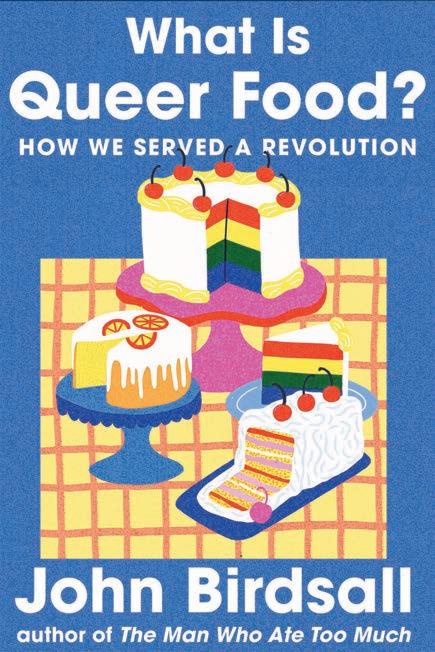
“What is Queer Food? How We Served a Revolution”
By John Birdsall
Readers who love to cook, bake or entertain, collect cookbooks, or use a fork will want this book. Its stories are nicely served, they’re addicting, and they may send you in search of cookbooks you didn’t know existed. Sometimes, though, you don’t want to be stuck in the kitchen, you want someone else to bring the grub. “Dining Out” by Erik Piepenburg is an often-nostalgic, lively look at LGBTQ-friendly places to grab a meal – both now and in the past.
In his introduction, Piepenburg admits that he’s a journalist, “not a historian or an academic,” which colors this book, but not negatively. Indeed, his journeys to “gay restaurants” – even his generous and wide-ranging definitions of the term – happily influence how he presents his narrative about eateries and other establishments that have fed protesters, nourished budding romances, and offered audacious inclusion.
Here, there are modern tales of drag lunches and lesbian-friendly automats that offered “cheap food” nearly a century ago. You’ll visit nightclubs, hamburger joints, and a bathhouse that feeds customers on holidays. Stepping back, you’ll read about AIDS activism at gay-friendly establishments, and mostly gay neighborhood watering holes. Go underground at a basement bar; keep tripping and meet proprietors, managers, customers and performers. Then take a peek into the future, as Piepenburg sees it.
The locales profiled in “Dining Out” may surprise you because of where they can be found; some of the hot-spots practically beg for a road trip.
After reading this book, you’ll feel welcome at any of them.
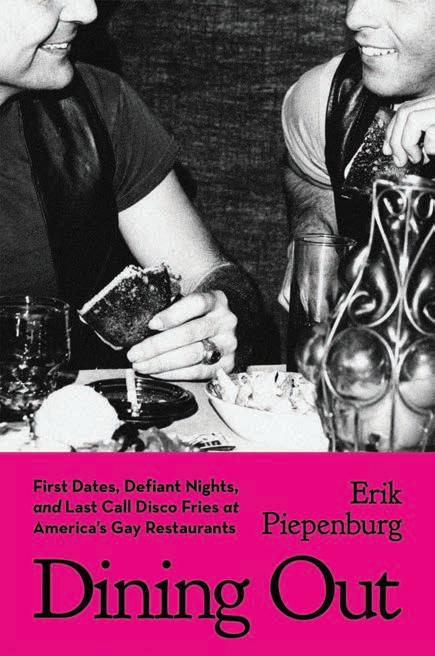
“Dining
Out: First Dates, Defiant Nights, and Last Call Disco Fries at America’s Gay Restaurants”
By Erik Piepenburg
Grand
If these books don’t shed enough light on queer food, then head to your favorite bookstore or library and ask for help finding more. The booksellers and librarians there will put cookbooks and history books directly in your hands, and they’ll help you find more on the history and culture of the food you eat. Grab them and you’ll agree, they’re pretty tasty reads.


If you’re looking for receipts, meet three creatives whose glow-up journeys began with LABP and have not lost momentum since
By AJ SLOAN
Let’s get one thing straight… or should I say, gay. At Los Angeles Black Pride (LABP), queerness shines brighter than the glitter under the spotlight and struts fiercer than any size 11 stilettos. LABP has long been the beating pulse of Black queer excellence in the City of queer Angels, not just a party but a proving ground. A space where legends are honored, careers are catapulted, and chosen family comes together.
This year’s theme, Legacy & Leadership in Action, is not another Pride month mantra. It’s a whole mood. It serves a reminder that we will not stand idly and wait for our recognition. We create it. And if you’re looking for receipts, meet three creatives whose glow-up journeys began with LABP and have not lost momentum since.
Before they were booked and busy, they participated in Los Angeles Black Pride, a place where Black queer excellence rises, where glam meets grit and where legends are born.
You know when someone walks into a room and suddenly everyone checks their posture? The person walking into that room is Ebony Lane. A Trans make-up artist (MUA) whose brushes do more than blend — they command. Lane’s artistry is lush, precise, and glistening with resilience. She’s made her name crafting unforgettable looks for film, fashion and fierce femmes who command the world’s attention.
But before the gigs, the gloss and the gag-worthy lewks, there was LABP, a space where Lane Lane found alignment between her artistry and her identity. As a longtime fixture in the Crenshaw beauty scene and a pioneer in L.A.’s ballroom and pageant community, Lane has used her platform to uplift young Black and trans folks by encouraging them to carry themselves boldly in their own truth. Her presence at LABP was never just about beauty but visibility and leadership. Today, Lane doesn’t just beat faces, she beats the odds flawlessly.
Grammy-nominated and gloriously ground-breaking, Berkley The Artist is proof that soul hits differently when it’s sung with purpose. Blending funk, truth, and a whole lot of Black queer excellence, Berkley’s music is equal parts hype and healing. Before the world heard his music, LABP passed him the mic.
As a performer who’s graced both intimate community stages and major music platforms, his rise in the music industry is deeply intertwined with spaces like LABP, that amplify Black queer expression. His artistry both entertains and empowers. Whether through healing lyrics or community-centered collabs, his work is a love letter to liberation.
Some people take pictures. KJ tells stories with a camera. The creative force behind My Black Is Gold, KJ’s photography turns everyday Black queer life into poetry for the eyes. His work feels like a love letter and a clapback all in one — soft and defiant all at the same time.
He first learned to capture folks in their full power at LABP.His work, now featured in exhibitions, digital campaigns and community projects, centers the intersection of softness and strength that is so signature to Black queer life. LABP provides a creative ecosystem where self-definition thrives.
These artists are proof that LABP doesn’t just celebrate Pride but cultivates legacy. It’s a space where Black queer brilliance isn’t just exhibited but elevated. It’s where identity and artistry work together. From makeup chairs to music stages, the impact of LABP is alive in every brushstroke, every beat, and every shot. As we honor these artists and uplift the next generation, one thing is clear — the future is Black, the future is queer, and at Los Angeles Black Pride, it is beautifully unstoppable.
